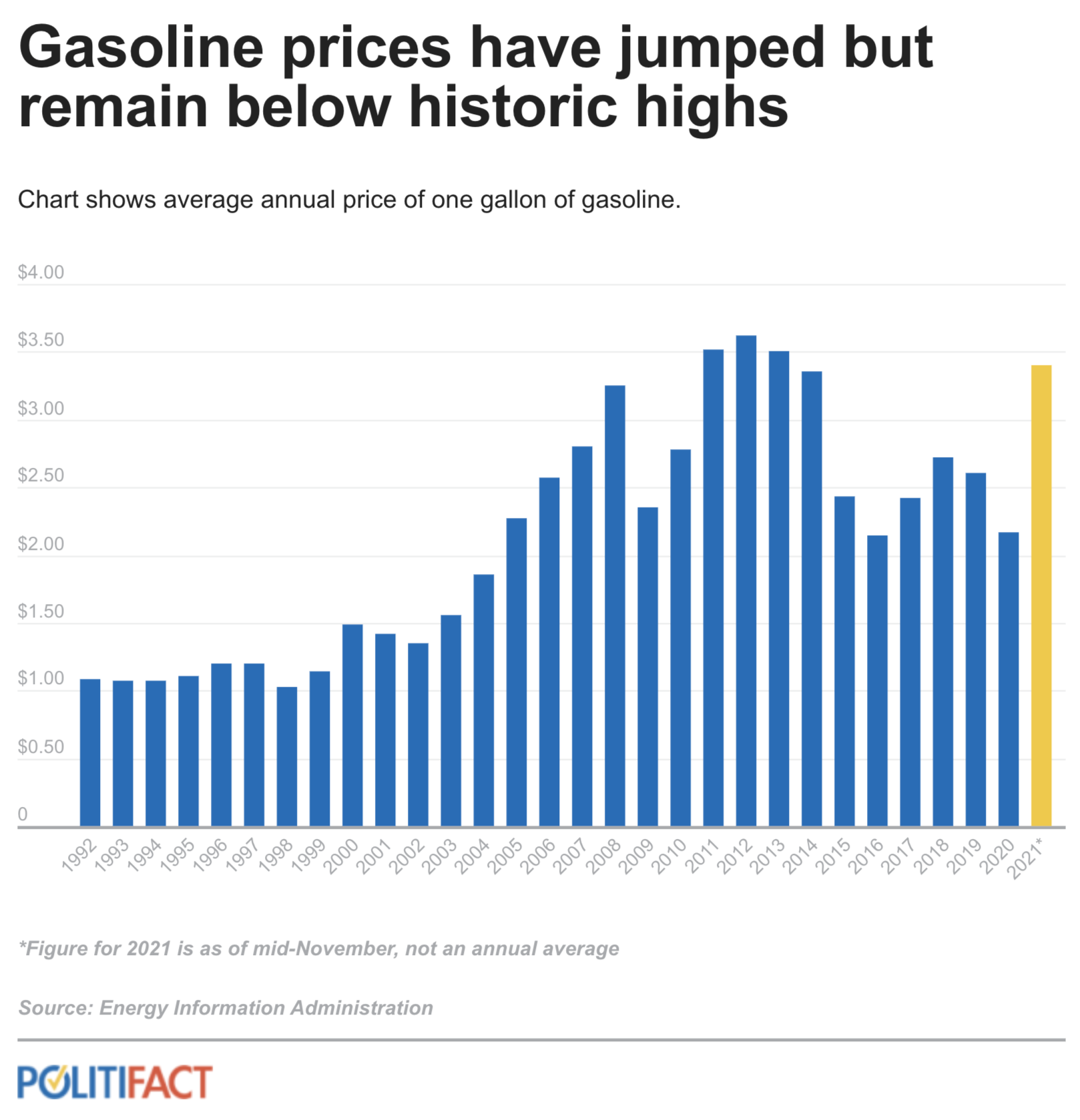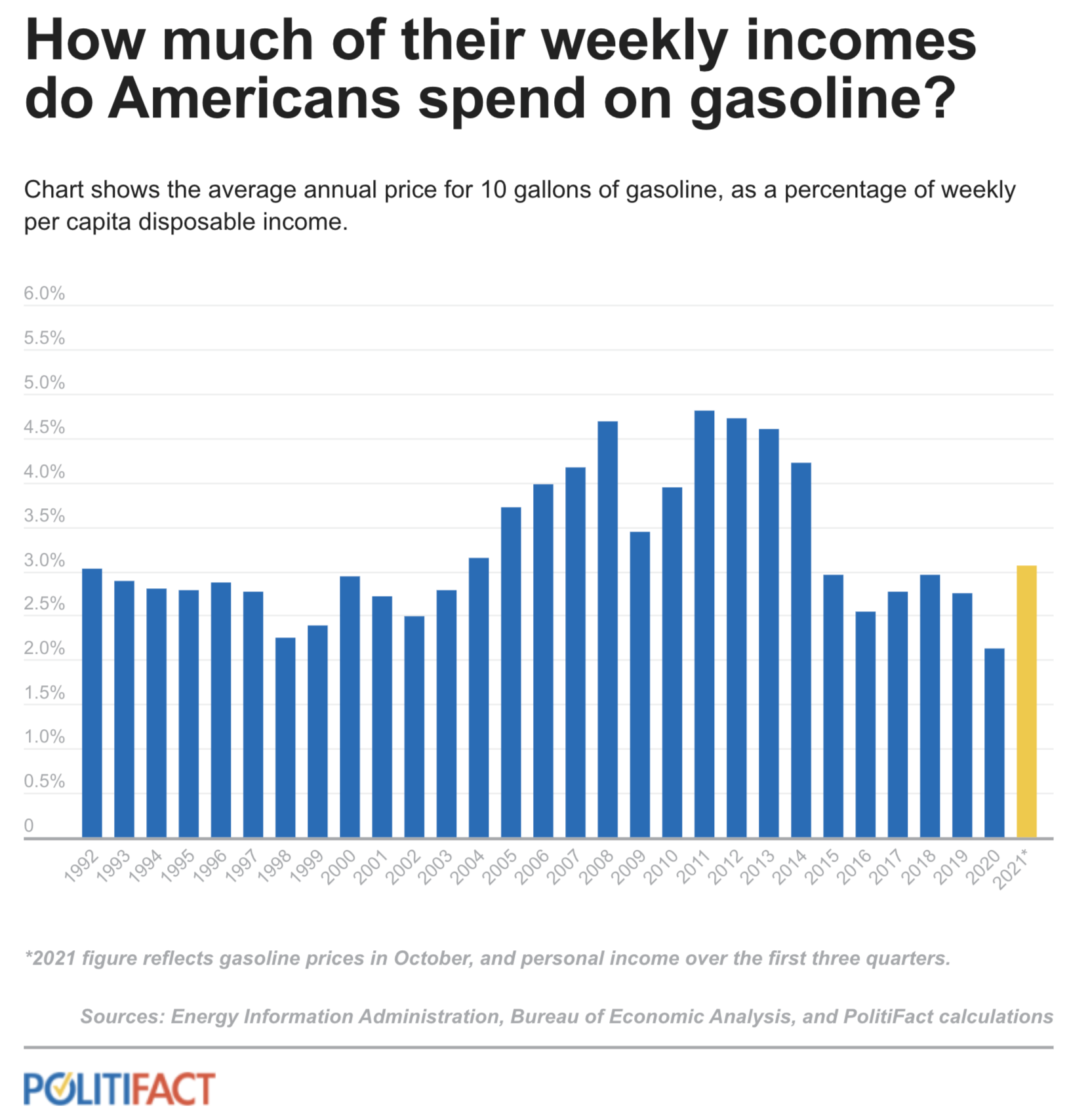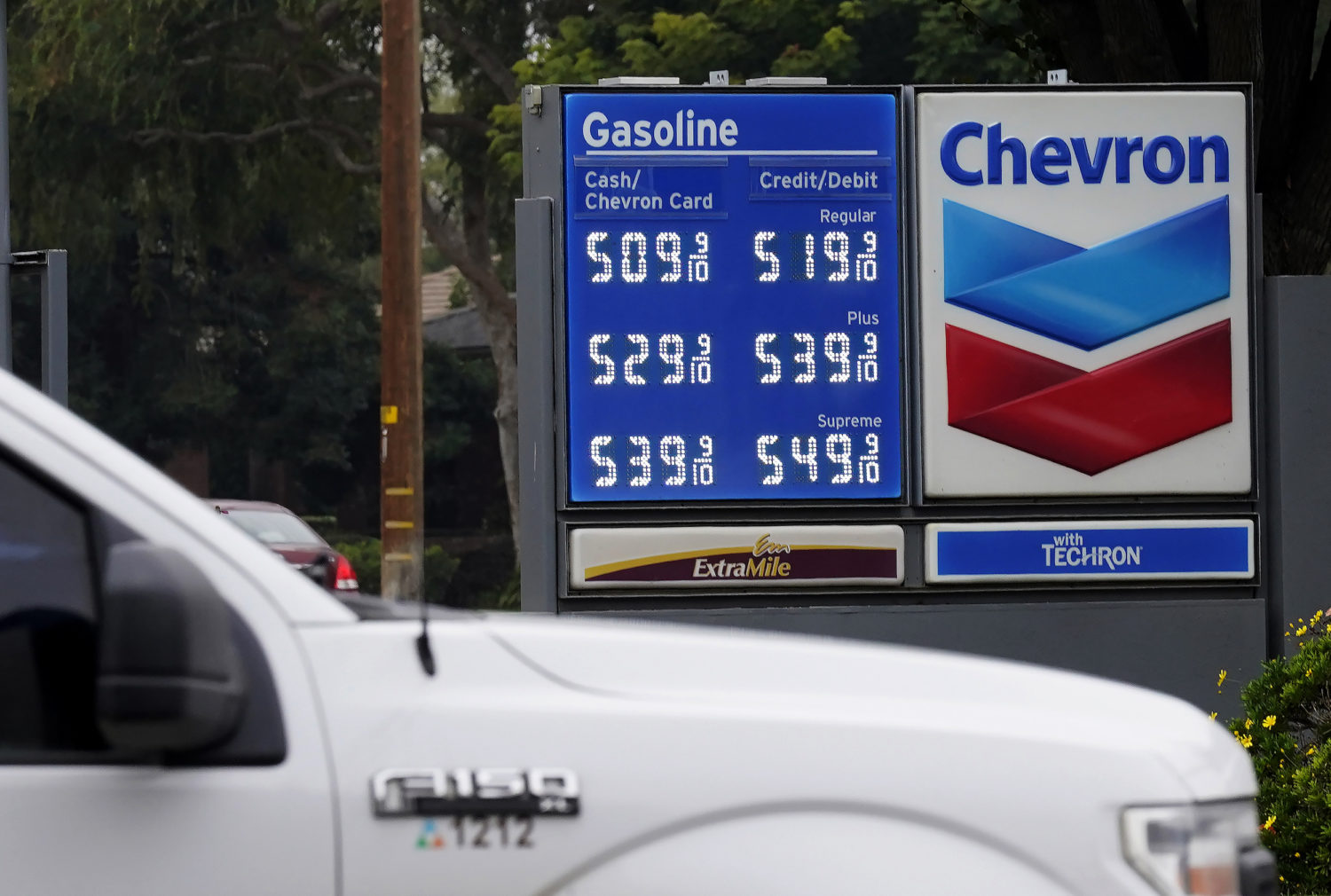With overall inflation now reaching a three-decade high, Americans are worried. Despite positive numbers in job gains and economic growth, stubbornly high levels of inflation have cast a pall on the public’s view of the economy.
A particular focus of public concern has been gasoline prices. That’s no surprise.
“Gasoline prices are eye-catching and memorable,” said Gary Burtless, an economist at the Brookings Institution. “Most of us car owners fill up our tanks regularly, and when we buy gas we seldom purchase anything else at the gas station. This makes the price even more memorable.”
But how high are gas prices really? How do they compare to historical levels?
When we asked economists and energy experts, they agreed on two takeaways. They said the price of gasoline today is not all that high when compared with the past three decades. But they also said the year-over-year price rise is a legitimate concern.
The burden of gas prices is at a pretty normal level right now, historically speaking
For the third week of November, a gallon of gas cost $3.39, according to the federal Energy Information Administration. This is a national average; there is variation across regions. Other sources of variation in a household’s gasoline costs are how many cars you own, how much you drive and how fuel-efficient your car is; literally, your mileage may vary.
To put today’s price in context, we looked at the trends for annual gasoline prices since 1992, which is as far back as the government’s data set goes. During that period, the single-week high was just over $4 a gallon in 2008, while the low was 93 cents a gallon in 1999.
Annual figures show much the same pattern. (The 2021 figure we used is the current price; the rest are annual averages.)

(PolitiFact)
So while today’s price per gallon is not a record, it’s definitely on the high end, historically.
However, it’s important to note that the agency’s gasoline prices are not adjusted for inflation. What if you factor in how much gasoline costs as a percentage of income? That would show how burdensome higher gas prices actually are for the average household.
We tried to do just that. First, we calculated the average annual cost of 10 gallons of gas, which is close to the average weekly purchase, according to GasBuddy.com. Then we used data for per capita personal disposable income from the federal Bureau of Economic Analysis. This figure reflects not just salaries and wages but also government payments, then adjusts that amount for taxes paid.
We divided this personal disposable income figure by 52, to approximate weekly income. Then we divided the cost of 10 gallons of gas by the weekly income figure to determine what percentage of income was devoted to paying for gasoline on a weekly basis.
We found that today’s gasoline price as a share of income has spiked compared with 2020, to 3.1% from about 2.1%.
That said, today’s percentage remains well below the levels of 2008 to 2014. For five of the seven years during that period, a 10-gallon weekly purchase represented 4.2% to 4.8% of disposable income.
Indeed, today’s level of 3.1% is very close to what it was from 1992 to 2003, and for most of the time since 2015, making today’s figure pretty much par for the course in recent history.

(PolitiFact)
The year-over-year rise is significant
Even so, if you’re seeing red over gas prices, it’s not your imagination.
Patrick DeHaan, head of petroleum analysis at GasBuddy.com, recently calculated the year-over-year price change in gasoline going back to 2002. The 66.1% increase earlier this year ranks as the fastest year-over-year increase during that period, just outpacing spikes in 2005 and 2010.
This is not surprising, experts say. During the pandemic, when travel and commuting was sharply curtailed, the demand for gasoline declined significantly, and so did the price. So year-over-year figures compare today’s prices to an unusually low level a year ago, exaggerating the jump, said Douglas Holtz-Eakin, president of the American Action Forum, a center-right think tank.
Whatever the reason, though, “the year-to-year change is significant,” said Mark Finley, a fellow in energy and global oil at Rice University’s Center for Energy Studies.
If the Energy Department’s latest projection is accurate, prices will grow on average during 2021 by 82 cents a gallon, which would outpace any year since 1992, Finley said.
Overall, Americans tend to remember the increases in prices more than the decreases, Burtless said. Even beyond gasoline, research shows that people tend to exaggerate price increases in their mind, he said.
“Since the early 1980s, gas prices have gone up and down, contrary to a popular narrative that prices only go up,” he said. “Many Americans may not recall how high gas prices were between 2008 and 2014.”
The bottom line: The recent gas price increase is real and unusually large. But the added financial burden of this price increase on family budgets is partly a reflection of depressed prices a year ago. In fact, today’s burden is largely in line with historical levels.
This article was originally published by PolitiFact, which is part of the Poynter Institute. It is republished here with permission. See the sources for these fact checks here and more of their fact checks here.







